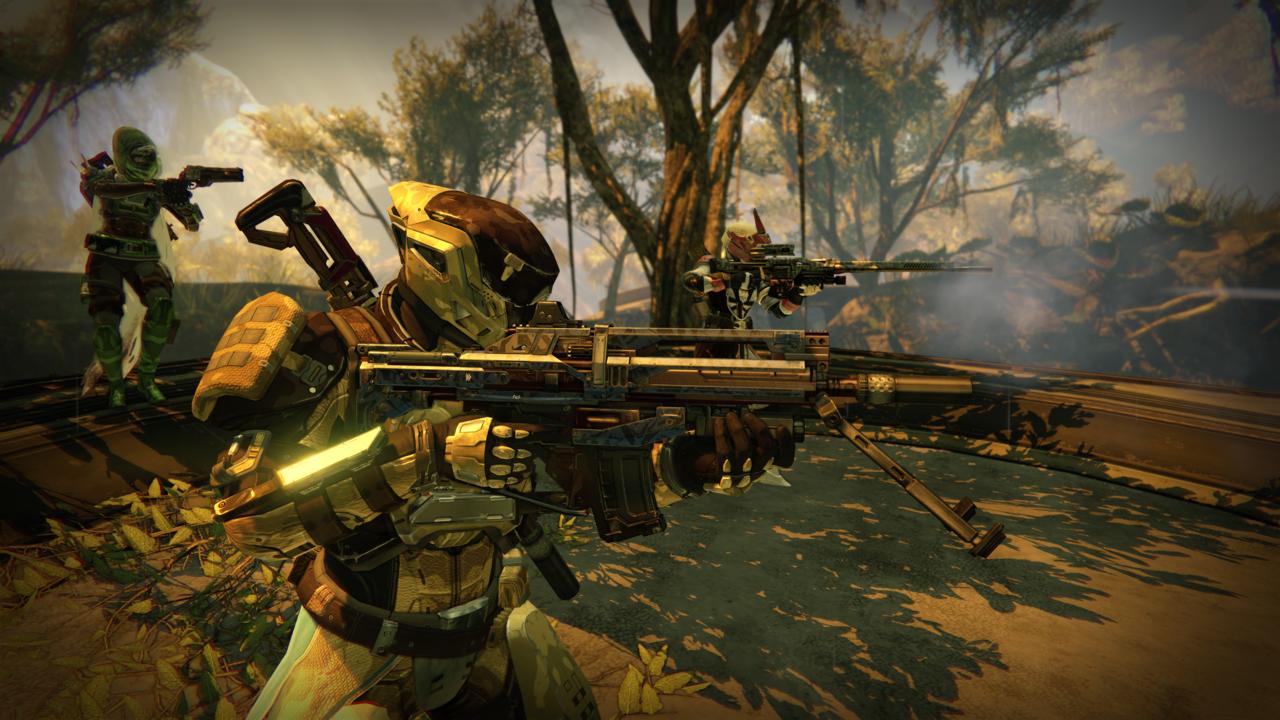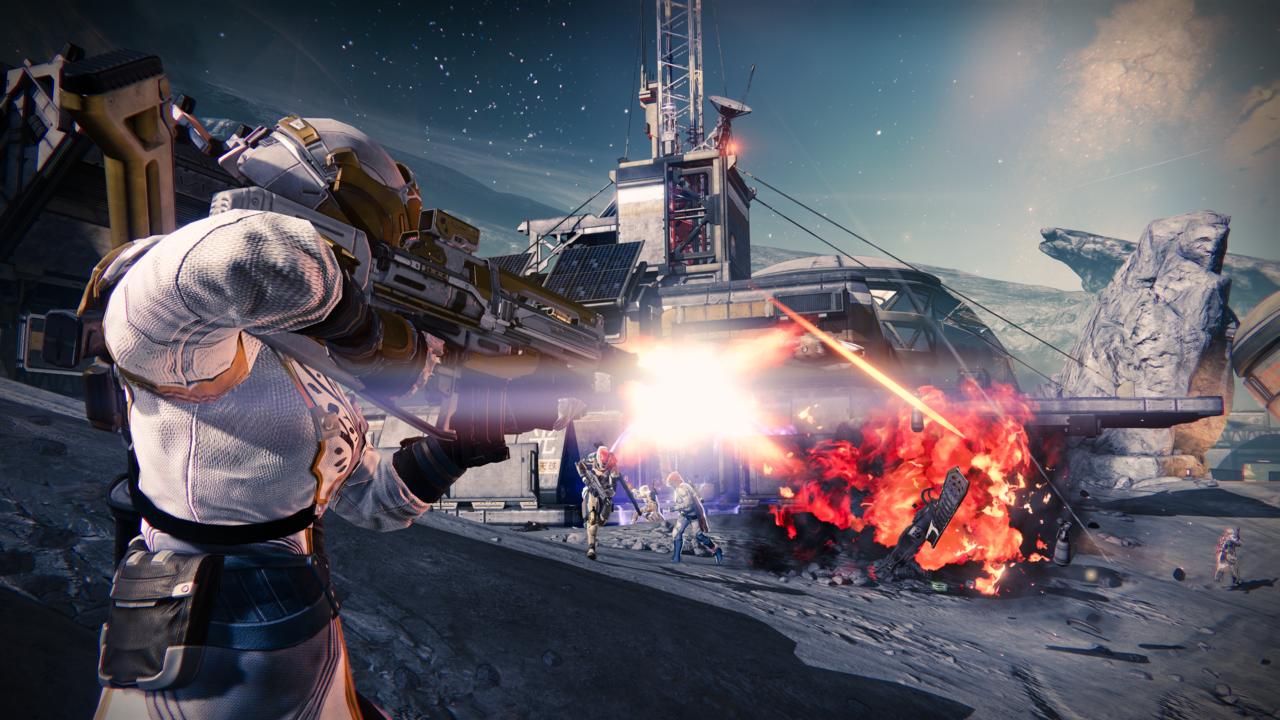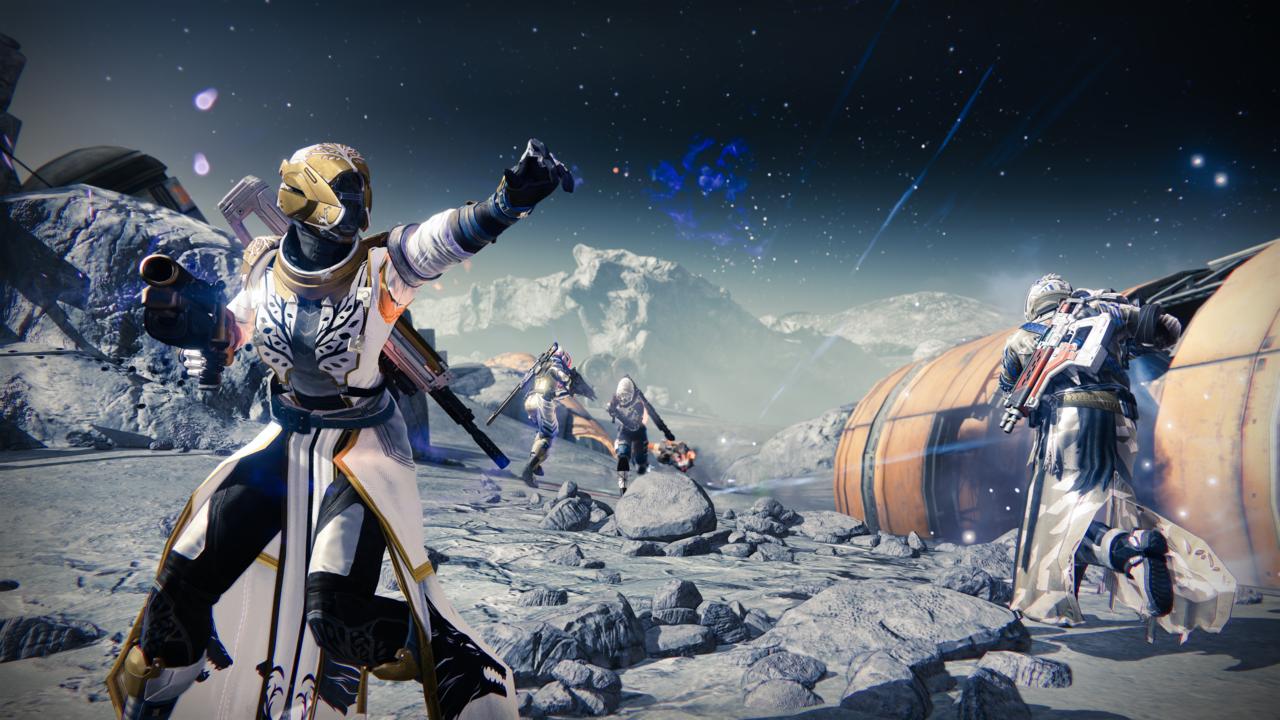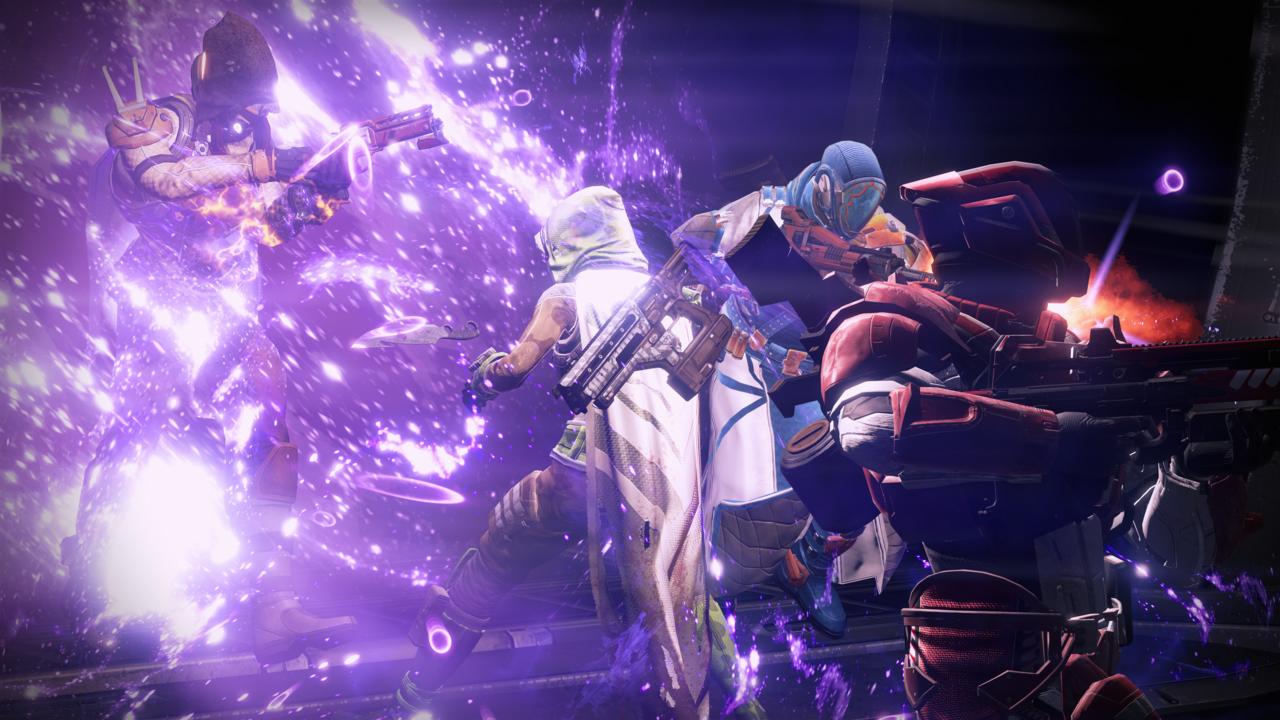Sometimes, when you leap online to play a multiplayer shooter, you just want to have fun. You're not interested in tense battles in which your every move has match-shattering consequences for your team, nor are you seeking to do right by Internet strangers that happen to fly the same flag. You just want to aim your weapon, pull the trigger, and delight in the power trip when your bullets find their mark. You are the lone action hero.
Other times, you seek the succulent reward of a well-earned victory, the kind you can only find when you and a well-coordinated group of focused soldiers act in tandem. You're not interested in individual power, but in fulfilling a vital role and doing it well, so that your team as a whole may harmonize as one single, violent chorus. The gears come together, the war machine cranks out discordant brutality, and you are happy to be one of the cogs that allows that machine to run.


Developer Bungie has been building up Destiny as the science-fiction shooter to end all science-fiction shooters, at least in terms of the breadth of its content, so it's not too surprising that the studio would be hoping to deliver a brand of online competition that suits wannabe action megastars and hopeful soldiers alike. Bungie has finally announced its full range of competitive game types, all of which are accessible from the Crucible, Destiny's competitive arena hub. If you played the public beta, then you may be familiar already with Control, Destiny's objective-capture game type, which features teams of six battling over control points within the game's larger maps. I rang up Derek Carroll, Destiny's senior designer, and Eric Osborne, Head of Community, to see what other details they were willing to share about the game's competitive arenas.
Control may be a team-based mode, but it's meant to be accessible to Rambo types as well as to players seeking to perform violent acts for the greater good. As Carroll says, "You don't have to feel like you're not doing the right thing. Pretty much anything that's fun to do is the right thing to do in that game type." If all you want to do is shoot the enemy, you're still helping, though if you're not interested in capturing territory on the map, you can still take to Clash mode, which is six-versus-six team deathmatch. And perhaps just having to be on a team is too stressful for you; unwinding with a video game means shooting anyone that dares to share the same virtual space with you. (Those bastards!) In that case, you're looking for Rumble mode, Destiny's six-player free-for-all extravaganza.
More interesting, however, are the three-on-three modes, starting with Skirmish. Skirmish mode resembles Control, but revives are turned on, so your teammates have longer respawn timers, which in turn demands a lot more coordination among team members than Control typically requires. Finally, Salvage asks three-member teams to recover relics that are scattered around the map. While one team tries to obtain and retain control of a relic, hoping to scan it and teleport it out, the other must halt the process by disabling the enemy's probe and stop the transmission.
This being Destiny, these modes aren't wholly disconnected from the rest of the experience. Says Osborne, "We can also layer events like Iron Banner [which removes gear restrictions that typically would be in place otherwise - ed.] over the top of core playlists, introducing new bounties, armor, weapons, and gear that players can earn for putting their best gear to the test, with level advantages turned on. In the beta, the playing field was leveled somewhat by the level eight cap, and limited access to weapons and armor, but players should expect Iron Banner to become more and more interesting as they build up their guardian with a wider and deeper pool of tools they can bring into the fight."


It was the three-on-three modes that I was most interested in, and Carroll and I spent the bulk of our conversation discussing Skirmish and Salvage modes, which he described as delivering really fun "nail-bitey" endings. I asked him to elaborate on what makes those modes so intense. He replied, "If you get spread out, you're isolated, and the opposing may be tightly grouped, or even if not physically grouped, than at least tightly coordinated. If you get split apart, you're in big trouble. Three rifles versus one rifle is always a bad deal for you."
"The main difference is in turning revives on," Carroll continued. "We extend the respawn timer to--I believe ten seconds is what we're shipping--so once you're down, ten seconds doesn't sound like a lot on paper, but ten seconds is a really long time to be without a teammate. If you get a teammate or two picked off, you have the choice--is your teammate in a place where you can revive him in time for him to make a difference, or is it more important for you to get to personal safety or to get to high ground to figure out what's going on, and have your teammates revive and run in from the periphery of the map?"
"There's definitely some interesting choices to be made," Carroll added. "Knowing where your teammates are and where the enemy is, what their status is, what weapons they have, what special abilities they have at their disposal, definitely makes it more intense."
As Carroll described these team dynamics to me, I recalled how my colleagues and I failed to coordinate our class choices, and as a result, almost all of us ended up playing the beta as warlocks. It was hard for me to imagine an all-warlock team having much of a chance against a more well-rounded trio, yet Carroll assured me that such a team can still be effective. "The sandbox is designed so that you can play how you want to play and what you're comfortable with." Nevertheless, team composition does play a role. "If you have a void titan that has the bubble shield super ability, their ability to lock down zones or protect their teammates while their reviving can be a game-changer. When you get down to smaller team sizes, all your choices are magnified--they're more important because there are fewer choices being made. In a six-v-six match, your individual contribution is more averaged out, it's less important because there are more people making more decisions all the time. [In smaller matches] your team is counting on you to do your job; there's more pressure on the individual."


Of course, such statements are not just hypotheses, but well-tested theories supported by mountains of data Bungie has collected from the beta testing period. And overall, Carroll is happy with how those numbers broke down. Classes were fairly even in distribution, allowing everyone to be the sci-fi soldier they wished to be without having to worry about class equilibrium. So far, no particular player build or group arrangement has thrown a particular game type or system out of whack, but Carroll acknowledges that something like that is always possible.
"Because we're data mining all this stuff, down the road it's certainly possible something like that might come up," says Carroll, "and we'll be able to react to that, but the beta was an amazing success, and there were no dire surprises on the sandbox side." This kind of data-mining would have been unthinkable even a decade ago. Says Carroll, "It's amazing to be able to react to the data. In previous games, a lot of times in the console world, you ship a game and that's it. The way Destiny's designed, that ten-year commitment, that desire to be constantly growing and tuning and tweaking, gives us the opportunity to make those changes, and guide it based on how the community is receiving it and what we're interested in."
If there's a downside to this ongoing collaboration between players and developer, it's the high degree of expectation built into the experience. "We've said we'd do it, so now we have to do it," says Carroll. Players might ask for changes they never get, and the development team might get branded as jerks--an inescapable aspect of the Internet, it would seem. In any case, Bungie is tweaking and nudging rather than conducting grand experiments at this stage of development. "It's all in the service of the best Destiny we can make," says Carroll. "When 4.6 million people play your beta, it gives you the idea that people are watching, everybody's watching. If we mess something up, or broke something, it's not going to go unnoticed."
Adds Osborne, "Launch is going to be a great new beginning for us. We'll be able to see what players do, where they go, and react in ways we never could before. Of course, we're really excited about what that means for our competitive multiplayer game, but it's also a support philosophy that we're expanding to cover the full breadth of Destiny."

It's certainly clear that Bungie intends for Destiny to be the next big thing, a promise that it could very well live up to, given the success of its beta and the amount of talent and resources being poured into the project. I haven't played any of the newly-announced competitive modes, so until that time comes, we can only take the team's words and intent at face value. Bungie's impressive track record, however, makes it easy to believe in Destiny's future.

